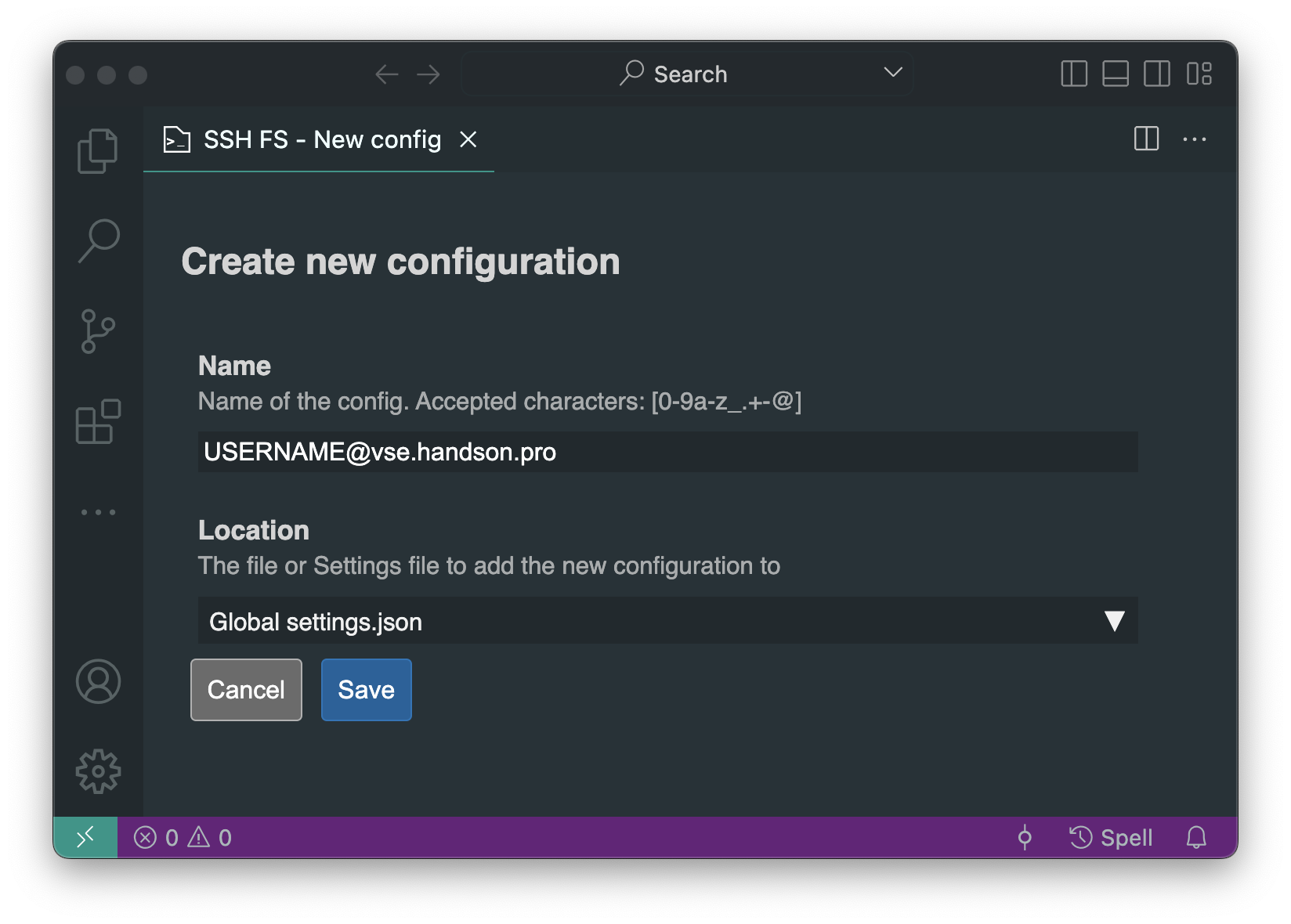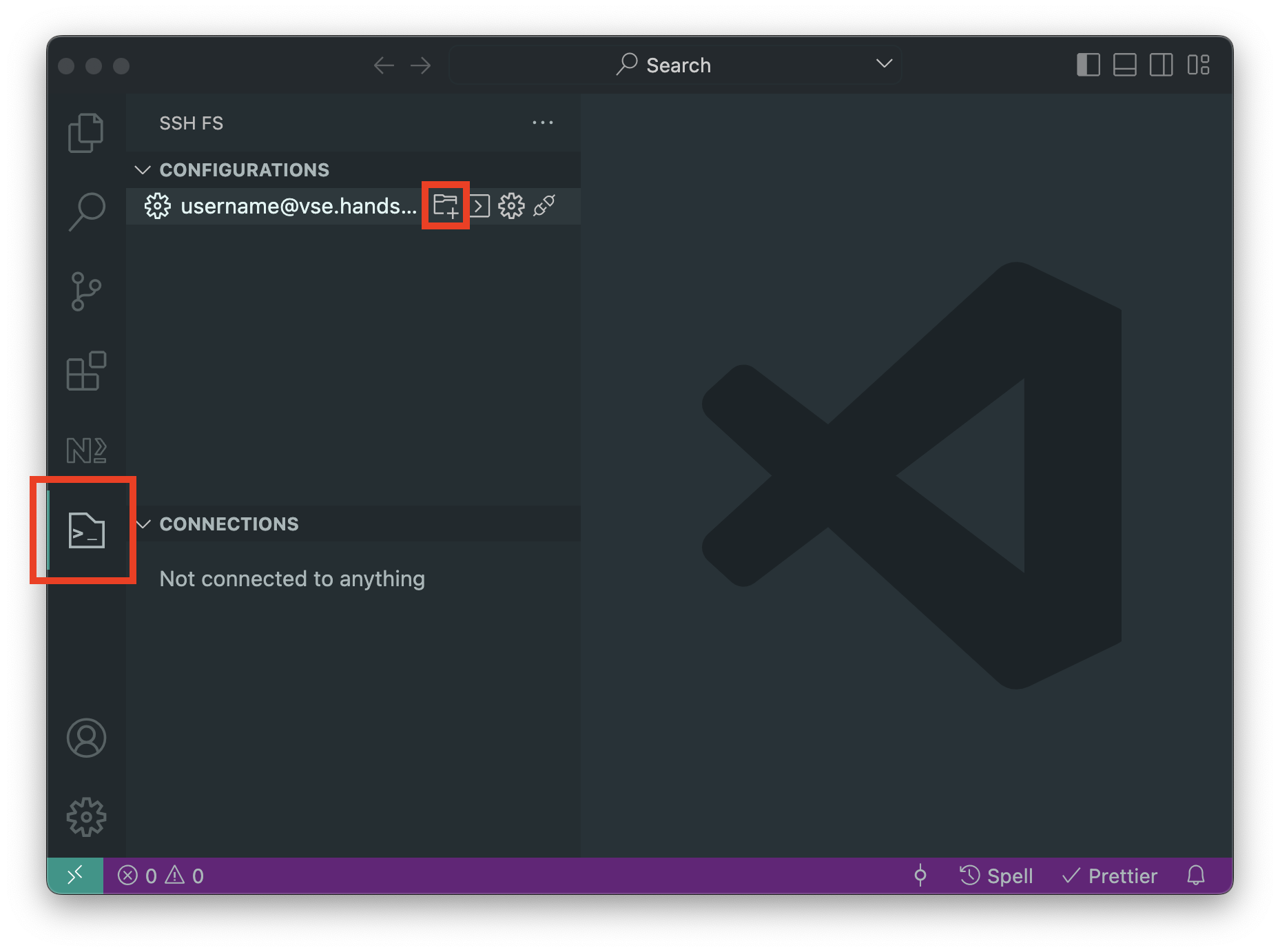1st Practical Class: Hello, Server!
(how to connect to 4IT580 server)
Connect to Server Using SSH
- You will need SSH client
- on Windows: use PuTTY
- on macOS/Linux: use your favorite terminal
- on macOS you can use macOS Terminal.app or iTerm2
Connect to SSH
-
on Windows:
-
open PuTTY

-
In Host Name (or IP address) enter:
-
Press Open button
-
You will be asked about username and password
- use SSH credential you have received in email from us
-
-
on macOS/Linux:
-
Open your terminal.
-
Enter (replace with your username):
-
You will be asked about password
- use SSH credential you have received in email from us
-
Initial Project Installation
-
connect to server using SSH
-
run following commands:
-
open: https://dev-frontend--vse.handson.pro/
- replace with your username
VS Code editor
We suggest using VS Code editor.
You can use any editor you like, but:
- you should be able to edit remote files over SSH/SFTP,
- it should support modern JavaScript (ES2015+) and JSX syntax.
Download VS Code
- Go to code.visualstudio.com and download the latest version
- Run VS Code and go to Extensions (Ctrl+Shift+X ,⇧⌘P) in the left panel
- Search for and install recommended packages Recommended VS Code Packages.
Recommended VS Code Packages
Setup SSH connection from VS Code to you remote space
-
Make sure to have supported SSH client installed (it'll be used by VS Code to connect to the remote host)
- MacOS should have it by default in terminal
- For Windows, PuTTY is not supported by VS Code,
use Windows OpenSSH Client instead
(you can still use PuTTY for accessing the SSH host via terminal)
-
In VS Code, select SSH FS: Create a SSH FS configuration from the command palette (F1, ⇧⌘P)
-
fill this:
- Name: (change for your username)
- Location:
-
 click Save
click Save -
new screen is presented, set following settings:
- Host:
- Root:
- Username: (use your username)
- Password: select (or type in your SSH password, if you want to save it in VS Code)
-
 scroll down and click Save
scroll down and click Save -
in left side of VS Code select SSH FS plugin, and select Add as Workspace folder icon next to your configuration. See screenshot:

-
it will ask you for password (maybe two times) and you can edit the project as usual
Run Frontend on Your Local Machine (optional)
Requirements
- Git
- use of command line tool is suggested
- Node.js v20
- use of nvm - Node Version Manager, nvm-windows or Fast Node Manager is suggested
- this allows simple management of multiple Node.js versions on your computer
- to install 20.14 run
- to use 20.14 run (this may be required each time you start new Terminal session)
- to use version defined in run
- if is not your cup of tea, you can download it directly from Node.js site
- Yarn v1 (there may be some issues with Yarn v2/v3 - it has not been tested)
- after you install Node.js you can run this to use Yarn v1:
- use of nvm - Node Version Manager, nvm-windows or Fast Node Manager is suggested
Clone Git Repo
Open Terminal or Command line and type: